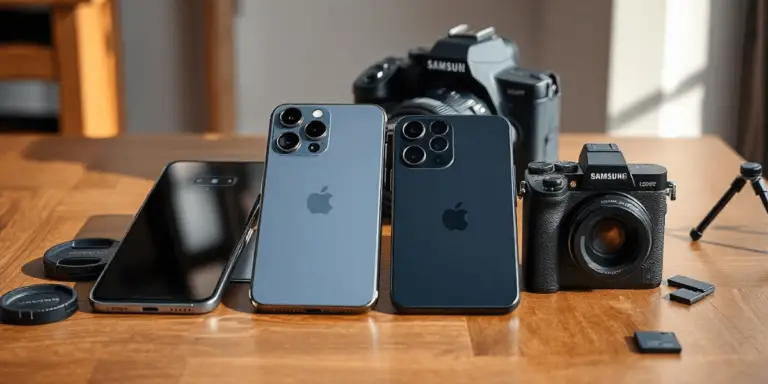When one thinks of professional photography, the name drops to DSLRs.
But some camera phones have closed the gap, offering features almost equivalent to or superior to those of most entry-level or mid-tier DSLRs.
The smartphones have advanced sensors, AI-powered tools, and versatile lenses in their small forms, making them one of the best cameras.
When it comes to portability and quality for photographers.
Let’s get into the best camera phones that can put even DSLR cameras to shame!
Best Camera Phones for Photography
1. Samsung Galaxy S24 Ultra
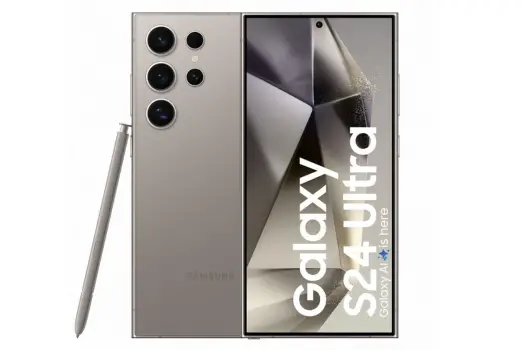
Samsung has made a name for itself in the innovation field, of smartphone photography, and this smartphone is no exception.
Using its 200MP primary sensor, the camera would be phenomenal for exceptionally detailed landscape photography and portraiture; there isn’t much it won’t be able to capture.
The periscope zoom lens enables an individual to shoot with an optical range of 10x without losing the quality that digital cameras with a telephoto lens can achieve.
Besides, Samsung’s RAW capture mode allows you to edit photos like a pro.
Key Features:
- 200MP main camera for ultra-detailed images.
- 10x optical zoom and 100x digital zoom.
- Expert RAW mode for professional-grade editing.
- Nightography for clear shots in low light.
Why It Beats DSLRs: Complete as a package for versatility in click photographers, be it wildlife or cityscapes, and with its zoom and processing capabilities, it truly is that alternative DSLR.
2. Apple iPhone 16 Pro Max
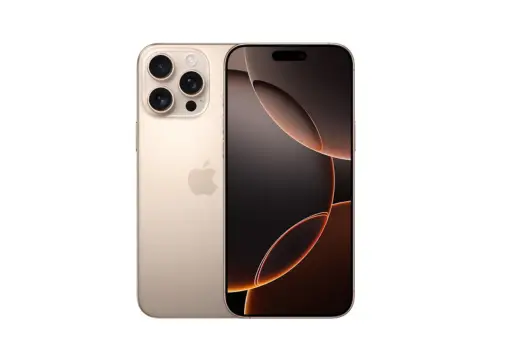
Long time ago, Apple started taking the lead in computational photography, and now with the iPhone 16 Pro Max, this undertaking is taken further ahead.
This smartphone captures photographic detail in a natural color palette with its existing 48MP primary sensor and photonic engine.
It now has a fresh telephoto lens offering 5x optical zoom and will pretty much blow a lot of things off in the cinematic mode.
It will allow capturing pretty looking videos with amazing quality, all the way up to 4K HDR.
Key Features:
- 48MP main camera with larger sensor size.
- 5x optical zoom for close-ups without distortion.
- Cinematic mode for professional-looking videos.
- Advanced HDR for balanced lighting in every shot.
Why It Beats DSLRs: IPhone 16 Pro Max has shown superior usability and reliability. It offers powerful artificial intelligence.
Users can take almost perfect photographs. It requires little manual editing, so it is carried by the on-the-go photographers.
3. Google Pixel 9 Pro
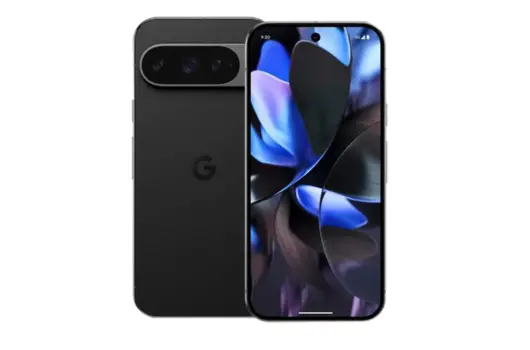
Google’s Pixel series has always focused on software-driven photography, and the Pixel 9 Pro stands out with its computational photography magic.
The phone’s 50MP main sensor, coupled with Google’s advanced algorithms, ensures stunning shots every time.
Whether it’s astrophotography or portrait mode, the Pixel 9 Pro shines in situations where DSLRs might require additional gear.
Key Features:
- 50MP main sensor with ultra-clear image quality.
- Astrophotography mode for night sky captures.
- Magic Eraser and Photo Unblur for post-shot editing.
- Enhanced HDR+ for balanced exposure.
Why It Beats DSLRs: Pixel 9 Pro provides AI tools to do the work of heavy lifting in photography.
A beginner who would like the features about photography but not the learning curve that comes with a heavy-duty DSL would find it a really good choice.
4. Sony Xperia 1 VI

Sony further brings the camera legacy from the Alpha series DSLRs to the Xperia 1 VI. The phone is equipped with three separate 12 MP sensors, each suited for different focal lengths.
It has its real-time eye autofocus and allows 120 frames per second recording at 4K, thus marking it as one of the serious contenders in still and movement capture.
Key Features:
- 12MP triple camera setup for flexibility.
- Real-time eye and object autofocus.
- 4K video recording at 120fps.
- Manual controls for shutter speed, ISO, and focus.
Why It Beats DSLRs: It’s as good a choice for a professional wanting yet another compact camera that gives their DSLR something to contend with in manual controls.
5. Huawei P60 Pro
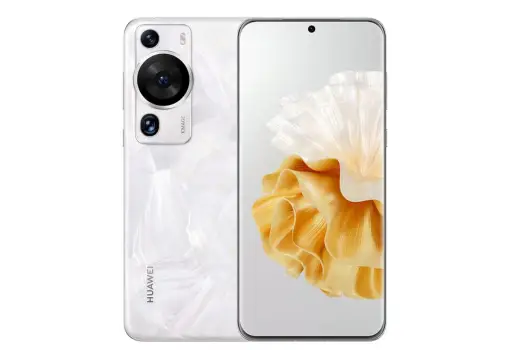
For the photography buffs, the Huawei P60 Pro is just something straight out of the moon in terms of its low-light performance and an incredibly versatile variable aperture lens.
The 48MP main camera can shift its f-stop from f/1.4 to f/4.0 to provide more control over depth of field and lighting effects.
The periscope zoom lens delivers pristine clarity, even at a 10x zoom.
Key Features:
- Variable aperture for creative depth control.
- Periscope lens with 10x optical zoom.
- Excellent low-light capabilities with AI Night Mode.
- High dynamic range for balanced shots.
Why It Beats DSLRs: Unlike most DSLR cameras, the P60 Pro features a huge variety of apertures that will spend time trying to achieve flexibility in lighting conditions while not adding to your weight with extra lenses.
6. Xiaomi 14 Pro

Under Xiaomi’s flagship phone is an engineering-scaled camera produced by and for Leica, making it the dream machine for photo enthusiasts.
A 50MP main sensor works excellently in taking sharp but very vivid pictures with the other two lenses, ultra-wide and telephoto, applying versatility in photography.
Naturally, photography color production is as close as possible with Leica.
Key Features:
- 50MP Leica main sensor for ultra-detailed shots.
- 3x telephoto and ultrawide lens options.
- Advanced color science for natural tones.
- Pro modes for manual adjustments.
Why It Beats DSLRs: Credit to Leica, the Xiaomi 14 Pro now bestows DSLR-like image quality in a compact form factor.
Great for the traveling photographer who does not want to lug around heavy equipment.
7. OnePlus 12

The OnePlus 12 has the unique feature of being in partnership with Hasselblad for better color calibration and wider dynamic range.
The primary 50MP sensor along with a 150-degree ultra-wide lens makes it suitable for creative compositions.
Its improved night mode also ensures that users can take clear, noise-free shots even in dim environments.
Key Features:
- 50MP Hasselblad main sensor.
- 150-degree ultrawide lens for creative angles.
- AI-powered Nightscape mode.
- RAW+ for advanced editing flexibility.
Why It Beats DSLRs: OnePlus 12 brings together its most ingenious hardware and the expertise of Hasselblad for a creativity-in-convenience that even DSLRs sometimes struggle to produce.
8. Vivo X100 Pro+

The Vivo X100 Pro+ comes out as yet another heavyweight champion, its 1-inch sensor measuring up.
A larger sensor size allows it to catch light better; thus, clearer and sharper images are produced.
It carries the gimbal-stabilized periscope zoom, hence making it best for action shots as well as long-range photography.
Key Features:
- 1-inch main sensor for superior light capture.
- Gimbal-stabilized 10x periscope zoom.
- AI-enhanced portrait mode.
- Ultra-clear night mode.
Why It Beats DSLRs: The Vivo X100 Pro+ is equipped with advanced hardware and AI to give results that are as great as high-end DSLRs, particularly in trying scenarios like low light or high motion.
Final Thought
The camera is best that accompanies you, so many a time; it turns out to be your smartphone.
Most of the technological advancements in mobile cameras have removed the need to compromise on quality. Now, users can enjoy convenience without sacrificing quality.
If you love capturing life around you or are a professional photographer, you will find these top camera phones impressive. They prove that the future of photography lies in your pocket.
Choose the one that fits your style and start snapping!
Related Articles:
- What to Do When Your Mobile Gets Hacked – 7 Easy Steps
- How to Keep Your Phone From Exploding: Simple Safety Tips
- Best Camera Setting For Iphone: A Practical Guide
